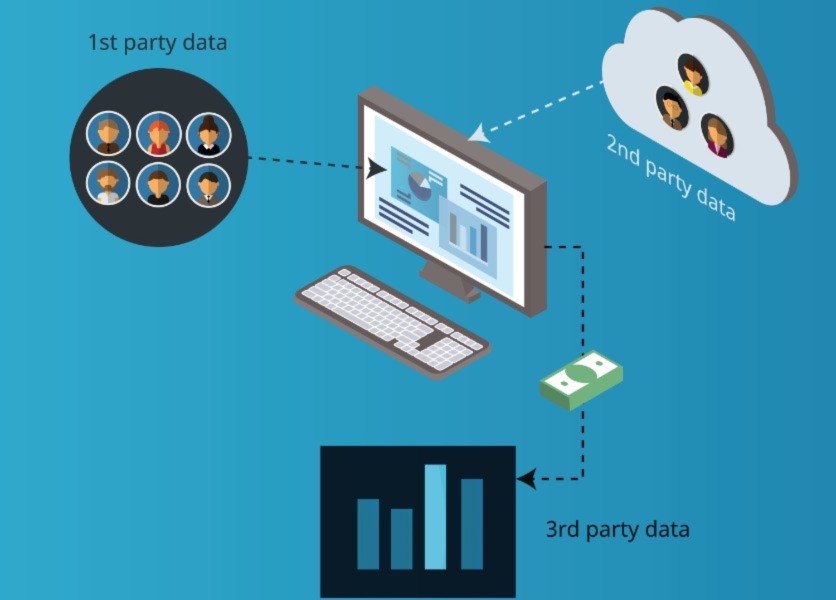March 22, 2023
What is a third-party cookie?
Cookies are essentially tiny data files that contain personal identifiers. They track your online activities to deliver advertisements that are more relevant to your likes, dislikes, and demographics.
Third-party cookies, in particular, are small pieces of data created by a website that is different from the one that the user is currently visiting (hence the name, third party). These types of cookies are usually used by analytics or advert companies to track a user’s activity across different websites. This can help the third party to understand an individual’s browsing habits.
For example, if a user visits a website that displays advertisements from a third-party advertising network, that network may use cookies to track the user's behavior across multiple sites and build a profile of their interests. This data can then be used to display targeted ads that are likely to be more relevant to the browser.
Third-party cookies have become controversial in recent years due to concerns over user privacy and data collection. Some web browsers now block third-party cookies by default, while others provide users with the option to opt out of being tracked.
The impact of third-party cookies on your marketing

Third-party cookies have been traditionally fantastic for the placement of relevant ads in front of interested buyers of your product. Marketing has relied on cookies for years to target niche audiences by collecting data and tracking user behavior.
Thanks to cookies, advertising campaigns have been able to effectively target consumers with the exact sorts of goods and services they’re interested in. Companies can effectively follow a user from website to website, reminding them of a product they may have viewed, and luring them back in. That’s why we all sometimes receive extremely well-timed and fitting ads on our Facebook feeds– making it feel like our phones are listening to us!
Yet, the increasing demand for online privacy and data protection is moving the world of digital marketing towards “cookieless” tactics.
Why are cookies going away?
Consumers are becoming more privacy-centric and demanding that their online activity not be so closely tracked or monitored. Google, which provides one of the world’s biggest advertising platforms, cited consumer demand for privacy and transparency as a major reason they’ve decided to move away from collecting cookies.
The company announced that it will stop tracking third-party cookies and fully phase them out by mid-2023. Essentially, Google has promised to stop collecting personally identifiable information from users. As Google phases out support for third-party cookies on their Chrome browser, businesses will need to seek alternative marketing strategies to replace them.
How to prepare your business with alternatives

As cookies are phased out, digital marketing strategists will need to find new ways to gather audience analytics. First-party data, which is collected by companies directly from consumers, will emerge as a critical part of what digital marketers have at their disposal.
First-party cookies will continue to exist, meaning that there will still be opportunities for audience segmentation and targeted marketing. Alternative tracking signals, such as probabilistic advertising, cohort-based advertising, and Universal ID will become more popular.
Probabilistic advertising uses statistical modeling to make educated guesses about what a user might be interested in. By relying on data and algorithms to make predictions, probabilistic advertising collects less personally-identifying information. It gathers data such as the user’s location, device type, and browsing history.
Cohort-based advertising also avoids the collection of personal identifiers by tracking and analyzing customer data over time. By identifying patterns and trends, marketers can create “cohorts” based on purchase history, demographics, or website behavior. Targeted marketing campaigns can be made for each of these cohorts.
Cohort-based advertising can be particularly effective in industries with high customer lifetime value, such as subscription-based services, where building long-term relationships with customers is crucial for success.
Lastly, Universal ID, or authentication, will become increasingly popular for advertisers once third-party cookies are fully phased out. Universal ID marketing uses unique, individual identifiers to track and target individuals online. It gathers one customer’s data across various devices and platforms, creating a comprehensive view of the individual, and allowing for more targeted advertisements. Universal ID marketing will rely more on consumers’ email addresses, device IDs, and social media profiles in the future, rather than their cookies.
Thriving in a cookieless world
Despite the end of third-party cookies, there are still plenty of opportunities for marketers to create targeted ad campaigns online. First-party data and cookies are not going away, and these identifiers can still be used to display relevant ads to the right consumer groups. While the cookieless world will be less exact, it doesn’t have to be less effective. Marketing teams will have to get more creative with how they organize their websites and display ads.
Digital advertising campaigns should leverage the use of first-party cookies while placing special emphasis on gathering consent and remaining transparent. After all, consumers are inspiring a movement for increased privacy online. People aren’t looking to be tracked without permission. Ensuring that customers are aware of which of their credentials will be stored online is of paramount importance in the cookieless world.
One alternative which doesn’t track individual users at all is context marketing. Contextual marketing places relevant ads based on page content rather than a user’s information. The cookieless future creates an opportunity to play around with new advertising formats and styles that don’t rely on tracking an individual, but rather, attracting them organically. Interactive ads, shoppable ads, and video ads may all increase in popularity as digital marketers try our new creative formats to engage their audiences and drive conversions.
To be successful in the new world of cookieless marketing, it's important to have a plan in place for managing and unifying your customer data across all your marketing efforts. This means making data a priority and using the right tools and processes to understand what's working and what's not. By doing this, you can ensure that your marketing is effective, efficient, and ready for a future without third-party cookies (before they’re fully gone!).
Prepare your business today with Click Mentality
Click Mentality is prepared to guide your brand through the phase-out of third-party cookies with new ideas, strategies, and advertising techniques. Our marketing experts can guide how you’ll be able to adapt your existing strategies to be more transparent and compliant with privacy regulations. By identifying new tracking and targeting methods, we’ll get you set up for an excellent transition into the cookieless future.